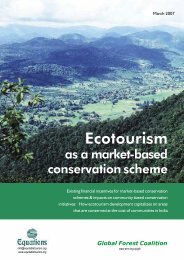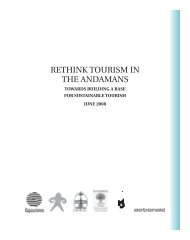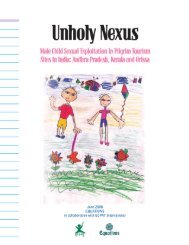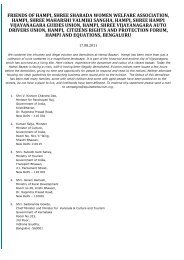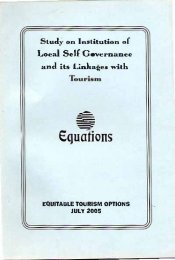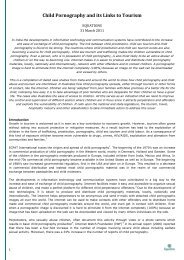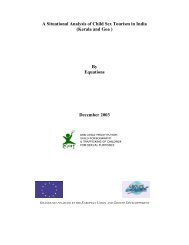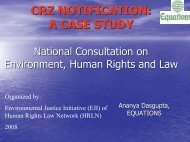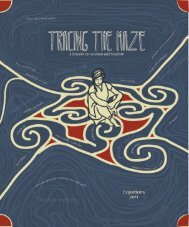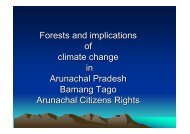Nilgiris Biosphere Reserve - Equitable Tourism Options
Nilgiris Biosphere Reserve - Equitable Tourism Options
Nilgiris Biosphere Reserve - Equitable Tourism Options
Create successful ePaper yourself
Turn your PDF publications into a flip-book with our unique Google optimized e-Paper software.
after having been approved by the International Development Association<br />
(IDA) and the GEF on September 5th, 1996. The project was slated to meet<br />
the expenses for project preparation, improved protected area<br />
management, village eco-development, education, and awareness,<br />
impact monitoring and research, overall project management and<br />
preparation of future biodiversity projects. The Indian Institute of Public<br />
Administration (IIPA) drew up the project in November 1993 and the<br />
agreement was signed on the 28th July 1996. The sanctuaries and national<br />
parks identified are Buxa Tiger <strong>Reserve</strong> (West Bengal), Gir National Park<br />
(Gujarat), Palamau Tiger <strong>Reserve</strong> (Bihar), Pench Tiger <strong>Reserve</strong> (Madhya<br />
Pradesh), Periyar Tiger <strong>Reserve</strong> (Kerala), Ranthambor Tiger <strong>Reserve</strong><br />
(Rajasthan) and Nagarhole National Park (Karnataka).<br />
The Bank's Operational Directive 4.2 on Indigenous People (IP) is to<br />
ensure that the IP do not suffer adverse effects, that there is informed<br />
participation and that they benefit. 4.3 on Involuntary Resettlement<br />
provides guidelines and principles like the improved relocation or at least<br />
restore economic base and living standards, involvement of the project<br />
affected in resettlement and a compensation package. Intense criticism on<br />
the destructive impact of WB projects in the past and sustained resistance<br />
from the project affected leading to huge cost over-runs and hence,<br />
reduced economic viability, had forced the Bank to introduce these<br />
directives. The Karnataka Government confirmed that since 1994<br />
reappraisal, they have not initiated any activities that could be considered<br />
as implementation of a resettlement plan that has not been reviewed by the<br />
Bank. In Nagarhole, the total population of the project area was estimated<br />
to be 72,652. The Forest Department had prepared a proposal to relocate<br />
all the 6145 adivasis. The proposal is to resettle the people in the H.D.Kote<br />
Taluk. Majority of the people have already experienced displacement more<br />
than once when the area was declared a sanctuary and major dams were<br />
constructed across the rivers Kabini, Tharaka and Nugu. However, the<br />
resettlement could not be carried out for a number of reasons, primarily the<br />
resistance to the relocation plan itself from the people and the non-release<br />
of funds from the Centre. The World Bank has insisted that no "involuntary<br />
resettlement" will take place as per their directives and that any such<br />
process would be after the conSUltation and participation of the adivasis.<br />
The adivasi leaders had met the World Bank Inspection Panel, which<br />
visited Nagarhole during the first week of September 1 999. They had<br />
<br />
--;m<br />
Nilagiris : Fading Glory 32



